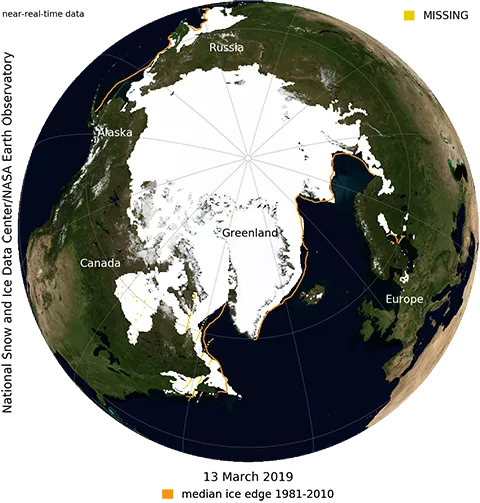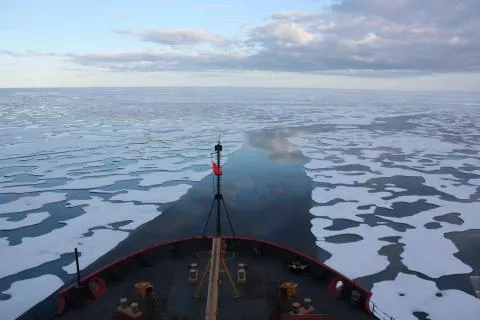Arctic sea ice likely reached its maximum extent for the year, at 14.78 million square kilometers (5.71 million square miles) on March 13, 2019, according to scientists at the National Snow and Ice Data Center (NSIDC) at the University of Colorado Boulder. The 2019 maximum is effectively tied with the 2007 maximum at seventh lowest in the 40-year satellite record.
“While this is not a record low year for the Arctic sea ice maximum extent, the last four years have been the lowest in our record, reflecting a downward trend in winter sea ice extent,” said NSIDC senior research scientist Walt Meier. “This is just another indicator of the rapid changes that are occurring in the Arctic due to climate change.”
Please note that the Arctic sea ice extent number is preliminary—continued winter conditions could still push the ice extent higher. NSIDC will issue a formal announcement at the beginning of April with full analysis of the possible causes behind this year’s ice conditions, interesting aspects of the ice growth season and graphics comparing this year to the long-term record. For example, this year has been marked by particularly low extent in the Bering Sea, including substantial ice loss during the month of February.
NSIDC is part of the Cooperative Institute for Research in Environmental Sciences (CIRES) at the University of Colorado Boulder. The NSIDC Sea Ice Today is supported in part by NASA.
To read the full analysis of ice conditions, visit NSIDC's Sea Ice Today page.
Download the NASA animation of the 2019 Arctic sea ice melt season here.
Read the online version of this news advisory.

